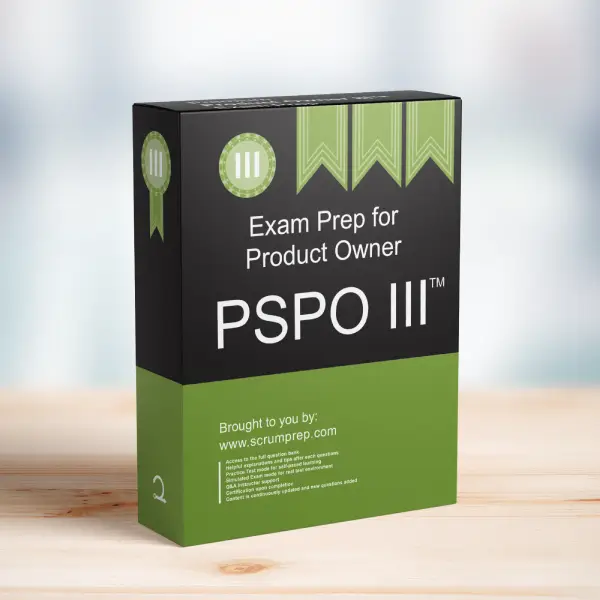Understanding Product Backlog Transparency in Scrum
Scrum is founded on empirical process control, which relies on transparency, inspection, and adaptation. Transparency ensures that everyone involved has a clear understanding of the work being done, which is critical for effective inspection and adaptation. The Product Backlog, as one of Scrum’s key artifacts, must be fully transparent to enable this process.
Exam Question
Scrum is based on empirical process control theory. All of its artifacts must be transparent to ensure sufficient accuracy of inspection.
What factors make the Product Backlog transparent?
Consider an organization with a fully transparent Product Backlog. If a competitor to that organization obtained access to the Product Backlog, could they understand it and use it to their advantage? Please respond with Yes or No, and explain your stance.
Explanation
Factors that Make the Product Backlog Transparent
- Clear and Detailed Product Backlog Items:
Significance: Each Product Backlog item (PBI) must be clearly described, including its purpose, expected outcome, and acceptance criteria. This level of detail ensures that all members of the Scrum Team and stakeholders understand what each item represents and what is required for it to be considered Done.
Example: A well-written Product Backlog item might include a user story, detailed descriptions, and specific acceptance criteria that outline how the item will deliver value to the customer. - Regular Refinement and Prioritization:
Significance: The Product Backlog is continuously refined to ensure that the highest-value items are ready for the next Sprint. This ongoing refinement process involves adding details, breaking down large items into smaller tasks, and reordering items based on their value and urgency. Regular refinement sessions help maintain transparency by keeping the Product Backlog up-to-date and aligned with the current goals of the product.
Example: During refinement sessions, the Scrum Team and Product Owner collaborate to clarify items, estimate effort, and adjust the order of items based on the latest information. - Accessibility and Visibility:
Significance: The Product Backlog must be easily accessible and visible to everyone involved in the project. This means that it should be stored in a location where all team members and stakeholders can view it at any time. This accessibility is crucial for maintaining transparency and ensuring that everyone is on the same page.
Example: The Product Backlog might be maintained in a digital tool like Jira or Trello, where it is visible to the entire Scrum Team and key stakeholders, ensuring that everyone has access to the latest information.
Competitor Access to a Transparent Product Backlog: Yes or No?
No.
Explanation:
While a fully transparent Product Backlog is essential within the organization for ensuring effective communication, alignment, and collaboration, it does not necessarily mean that an external party, such as a competitor, could easily understand and leverage it to their advantage. The reasons include:
- Contextual Understanding:
The Product Backlog is deeply tied to the specific context of the organization, including its strategic goals, customer insights, and the technical environment. A competitor who gains access to the Product Backlog might see a list of items, but without the contextual understanding of the organization’s vision, customer base, and internal processes, they would struggle to interpret the true intent and value of the items. - Lack of Strategic Insight:
Even with access to the Product Backlog, a competitor would not have visibility into the broader strategic considerations that guide the prioritization and development of the backlog items. The value of each item is determined by how it fits into the larger product strategy, something that is not always evident from the backlog alone. - Dynamic Nature of the Backlog:
The Product Backlog is not a static document; it is continuously evolving based on new information, feedback, and changes in priorities. A competitor might see a snapshot in time, but without understanding how the backlog evolves and the decision-making process behind it, they would find it challenging to derive actionable insights.
Relevance to the PSPO III Exam
For Product Owners preparing for the PSPO III exam, understanding the concept of transparency in Scrum is fundamental. This scenario tests the ability to articulate how transparency is maintained in the Product Backlog and to analyze the implications of that transparency, particularly in the context of competitive advantage.
Key Takeaways
- Transparency in the Product Backlog: Clear and detailed items, regular refinement, and accessibility are key to maintaining transparency in the Product Backlog.
- Competitor Understanding: Even if a competitor accessed the Product Backlog, they would likely lack the necessary context and strategic insight to use it effectively.
- Importance of Context: The value and meaning of Product Backlog items are closely tied to the specific context of the organization, making it difficult for external parties to fully understand or exploit the information.
Conclusion
Transparency in the Product Backlog is essential for the effective functioning of a Scrum Team, ensuring that everyone has a clear understanding of the work ahead. However, if a competitor were to gain access to a fully transparent Product Backlog, it is unlikely they could use it to their advantage without the necessary context and strategic insight. For more insights on Product Backlog management and to prepare for the PSPO III exam, visit our PSPO III Exam Prep.


